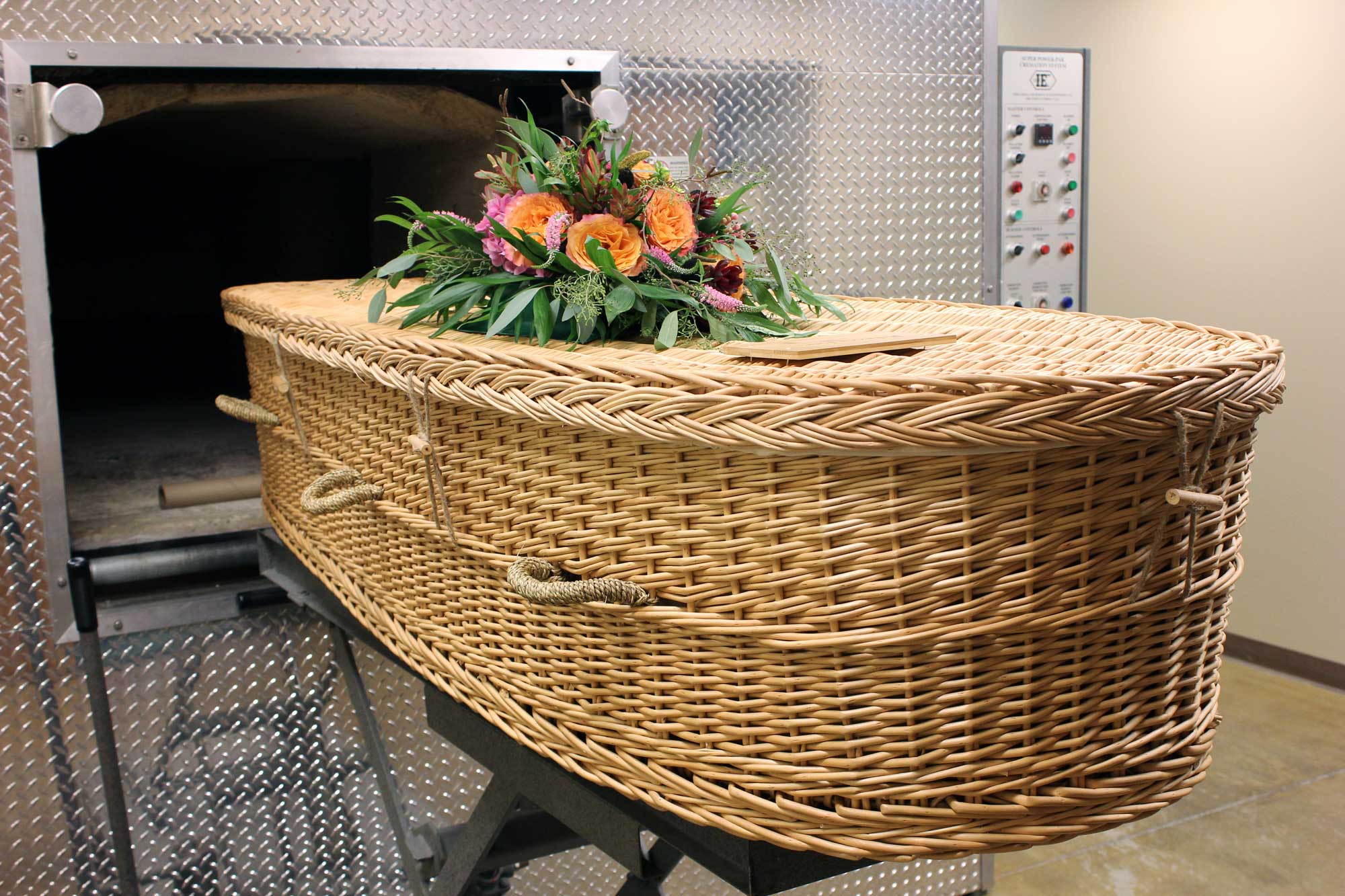Going GREEN
Simple, Straightforward Cremation Services with no added on fees or costs.Green Burial
What is Green Burial?
Green (or natural) burial emphasizes simplicity and environmental sustainability. The body is neither cremated nor prepared with chemicals such as embalming fluids. It is simply placed in a biodegradable coffin or shroud and interred without a concrete burial vault. The gravesite is allowed to return to nature. The goal is the complete decomposition of the body and its natural return to the soil. Only then can a burial truly be “ashes to ashes, dust to dust,” a phrase so often used when we bury our dead.
Why Choose Green Burial?
Green burials are not new. Most burials before the mid-19th century were conducted this way, as are many Jewish and Muslim burials today. Green burials are enjoying a resurgence in popularity, for a number of reasons:
- Simplicity. The idea of wrapping the body in a shroud or placing it in a plain, unadorned coffin appeals to those who prefer their burial arrangement to be simple, natural and unpretentious.
- Lower cost. Because green burials do not involve embalming, fancy caskets, or concrete vaults, they can be a very cost-effective alternative to conventional burials, lowering the cost by thousands of dollars. If the family supplies their own shroud or coffin, the cost can be further reduced.
- Conserving natural resources. Each year US cemeteries bury over 30 million board feet of hardwood and 90,000 tons of steel in caskets, 17,000 tons of steel and copper in vaults, and 1.6 million tons of reinforced concrete in vaults. With a green burial, fewer resources are used.
- Eliminating hazardous chemicals. For some, forgoing the embalming process is the main attraction, since embalming fluid contains formaldehyde, a respiratory irritant, and a known carcinogen. In the US about 5.3 million gallons of embalming fluid are used every year, and funeral home workers are exposed to it routinely.
- Preserving natural areas. Love of nature and a desire for “eternal rest” in a forever-wild meadow or forest are frequently-cited reasons for choosing green burial. The burial sites restore or preserve a natural landscape populated by native trees, shrubs, and wildflowers; the sites offer food and refuge to birds and other wildlife. The most conservation-intensive green cemeteries do not use fertilizer, pesticides, or herbicides. A green cemetery can be an important component in the acquisition and conservation of native habitats.
Cremation

Green cremations are a new aspect of a larger trend that has been developing for several decades. In America, cremation is now the most common alternative to the traditional funeral. In some regions of the country, cremation is chosen for as many as 80% of funerals.
Traditional cremation is the reduction of the body to bone fragments through the application of intense heat. The fragments are then finely processed so that they can be placed in an urn for final disposition. A greener cremation takes additional steps to make the process more eco-friendly.
Eco-friendly cremations (also known as eco-cremations and natural cremations) require no harmful chemicals like those used in the embalming process. Cremation with scattering is even less wasteful: no casket or space in the ground is required.
Cremation uses far fewer resources than almost any other disposition option but it does have an environmental impact. Cremation requires the burning of fossil fuels, and some older cremation facilities can use significantly more energy compared to newer ones. Mercury is also emitted when a person with dental amalgam fillings is cremated, but the development of effective filtration devices and the decline in use of dental amalgam fillings will eventually mitigate this problem.
There are other elements to a green cremation, beginning with the use of eco friendly caskets that do not release harmful chemicals into the atmosphere during the cremation process. Cremated remains may be placed in urns made from materials that break down naturally in the earth or water, such as Himalayan rock salt or sustainably-produced handmade paper.
Greener Choices in a Conventional Cemetery

Even in a conventional cemetery you can still choose a greener burial. Use a green casket or a shroud. If possible, decline the use of a concrete vault or liner. (Vaults and liners are designed to prevent the ground from sinking in when the casket and body decompose. This makes it easier to maintain the manicured, level lawns we associate with modern memorial parks, but it wastes a lot of resources.) Many conventional cemeteries require either a vault or grave liner, but this practice may change if more people reject it. A greener option is a liner with no bottom, which allows the body or casket to rest in the earth. There are also conventional cemeteries that are beginning to allow vault-less burial anywhere in the cemetery. If this option is available, there are often additional charges to prepare the grave prior to burial and to maintain it after burial. These charges can equal or exceed the costs of a vault or liner.
Cardinal Funeral & Cremation Services, LTD
Phone: (773) 558-7175
2090 Larkin Avenue, Elgin, IL 60123
© Simply Cardinal
Crafted with care by Frazer Consultants & TA